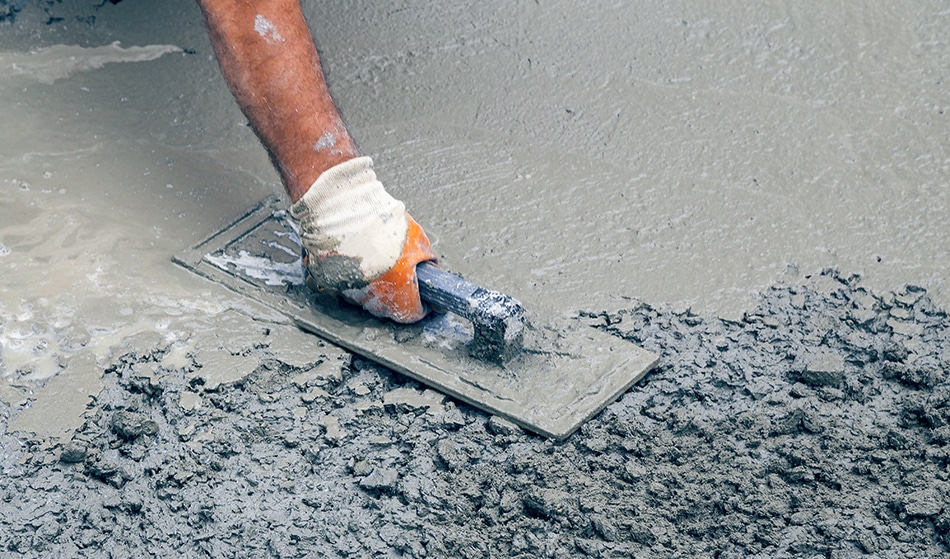Why Concrete Is A Durable Building Material In Vista?

- One of the primary reasons concrete is known for its durability is its exceptional strength and structural integrity. Concrete is a composite material made from cement, water, and aggregates like sand and gravel. When these components are mixed and cured, they create a solid and dense material that can withstand significant loads and forces. Concrete’s compressive strength is particularly impressive, allowing it to bear heavy loads without deformation or failure. This characteristic is invaluable in high-rise buildings, bridges, and other structures that must support substantial weight. Additionally, concrete’s resistance to weathering and environmental factors, such as moisture and temperature fluctuations, contributes to its long-term structural stability.
- Concrete’s ability to withstand harsh environmental conditions is another key factor in its durability. Unlike some building materials that may deteriorate when exposed to moisture, concrete actually becomes stronger over time when cured properly. This natural process, called hydration, continues for many years, enhancing the material’s strength. Concrete is also resistant to fire, making it an ideal choice for constructing buildings and structures where fire safety is paramount. Its low thermal conductivity prevents the rapid spread of flames, offering valuable time for evacuation and firefighting efforts. Furthermore, concrete is highly resistant to pests, such as termites and rodents, which can be detrimental to wooden structures. This resistance to biological decay ensures that concrete structures maintain their integrity and durability for decades.
- Concrete structures are renowned for their longevity. When designed and built correctly, concrete buildings can last for generations with minimal maintenance. This is particularly advantageous for infrastructure projects where the cost and inconvenience of frequent repairs and replacements are significant concerns. In comparison to some other building materials that may require regular painting, sealing, or repairs, concrete requires relatively low maintenance. Occasional inspections and minor repairs can help extend the lifespan of concrete structures even further, making them a cost-effective choice in the long run.
- Concrete’s versatility is another reason for its enduring popularity in construction. It can be molded and shaped into various forms, allowing architects and builders to create innovative and aesthetically pleasing designs. Whether it’s the sleek curves of a modern skyscraper or the intricate details of a historic bridge, concrete can be adapted to meet the design requirements of virtually any project. Additionally, concrete can be mixed with pigments and additives to achieve a wide range of colors and textures, enhancing its visual appeal. This versatility allows for the creation of beautiful and durable structures that stand as testaments to both form and function.
- In recent years, sustainability has become a crucial consideration in construction. Concrete, when used responsibly, can be an environmentally friendly choice. It is produced from abundant raw materials, and its long lifespan reduces the need for frequent replacements, minimizing waste and resource consumption. Moreover, concrete has excellent thermal mass properties, which can contribute to energy efficiency in buildings. It helps regulate indoor temperatures, reducing the need for heating and cooling, which, in turn, lowers energy consumption and greenhouse gas emissions.
FAQs
Is Concrete An Eco-Friendly Building Material?
Concrete can be eco-friendly when produced and used responsibly. Its long lifespan and energy-efficient properties can contribute to sustainability in construction. Additionally, some sustainable practices, such as using recycled aggregates and reducing cement content, can make concrete more environmentally friendly.
How Can I Maintain The Durability Of A Concrete Structure?
Regular inspections and maintenance, including sealing cracks and addressing minor issues promptly, can help extend the lifespan of a concrete structure. Proper curing during construction is also essential for maximizing its strength and durability.
Are There Any Drawbacks To Using Concrete In Construction?
While concrete offers numerous advantages, it does have some drawbacks, including its relatively high carbon footprint during production and its susceptibility to cracking under certain conditions. However, these issues can be mitigated through sustainable practices and proper design and construction techniques.
Conclusion
Concrete’s durability is a result of its strength, resistance to environmental factors, longevity, versatility in design, and sustainability. These qualities have made it a cornerstone of modern construction, offering builders and engineers a reliable and enduring material to work with. As the construction industry continues to evolve, concrete remains a vital player in building a sustainable and resilient future. For more information, contact Concrete Contractor Vista at (760) 313-6116.